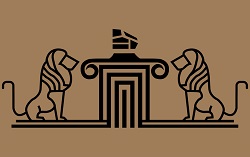Location: Oslo, Norway
Architects: Snøhetta
Typology: Opera House
Area: 38,500 m2
Year: 2007
The Oslo Opera House (Operahuset in Norwegian) is renowned worldwide as the building shaped like it is emerging from within the water. Located at the head of the Oslofjord, on the tip of the Bjørvika peninsula, it was inaugurated in 2008 after seven years of construction. The contemporary building was designed by an architecture firm named Snøhetta as part of a design competition.
This office is known for its architectural, landscape, interior and brand design projects and is based in the Norwegian capital. The studio is famous for its ethical philosophy, focusing its projects on the cultural valorisation of the countries where their projects are located and the respect for the surrounding landscape, thus projects that adapt themselves to the climate and the ecological system within which they are integrated.
Bjørvika peninsula is part of a harbour city, which is historically known as the meeting point with the rest of the world. Therefore, the Oslo Opera House appears to be one with the shore, defining the line that divides the ground from the water as both a symbolic and real threshold: “This threshold is realised as a large wall on the line of the meeting between land and sea, Norway and the world, art and everyday life. This is the threshold where the public meets the art.”
As a basis for the competition, a detailed brief was developed. The firm proposed that the production facilities of the opera house should be looked at as a self-contained, rationally planned ‘factory’. It was essential that this factory be both functional and flexible during the design phase as well as in later use. The importance of this flexibility has proved to be essential during the planning phase. Several rooms have been adjusted in collaboration with the end-user. This has allowed the building to improve with respect to functionality without affecting the architectural design.
The design brief of the competition stated that the opera house should be of high architectural quality and its expression should be monumental. The idea of joint ownership, the concept of togetherness and the easy and open access for all legitimised this monumentality. To achieve a monumentality according to these notions, the firm designed the opera house accessible in the widest possible sense by laying out a ‘carpet’ of horizontal and sloping surfaces on top of the building. An articulated form based on the cityscape has been given to this carpet. Therefore, horizontal extensions achieve monumentality rather than verticality. The conceptual basis of the competition, the final building, is a combination of these three elements – The wave wall, the factory, and the carpet.
The choice of materials for the project was as important as the architectural design. Snøhettas architecture is narrative. It is the materials that form the defining elements of the spaces. It is the meeting of the materials which articulates the architecture through varied detail and precision. Three main materials were chosen for the opera house as part of the competition entry: White stone for the ‘carpet’, timber for the ‘wave wall’, and metal for the ‘factory’. After work began on the project, another material, glass, was introduced, which allowed for the exposure of the underside of the ‘carpet’.
Italian Carrara Marble was chosen after an international tender competition. The ability to retain its brilliance and colour even when wet is one of its brilliant qualities, which is common with other marbles. It has the necessary technical quality in terms of stability, density, and longevity. With an accessible area of the ‘carpet’ being approximately 18,000 m2, its detailed design has been important. The architect desired that it should not interfere with the general form of the building but that it simultaneously should articulate enough to be interesting at close quarters. It took many proposals from various artists to achieve the final main geometry, which includes a non-repetitive pattern with integrated raised areas, special cuts, and various surface textures.
For the ‘wave wall’ and the main auditorium, oak was chosen as the dominating material for the design. It is used throughout for the floors, walls, and ceilings. Conical shapes make up the complex geometry of the wave wall, which is also an important acoustic attenuator within the foyer space. To be able to deal with the changing geometry, it is made up of smaller elements. This also provides acoustic absorption. The oak has been treated with ammonia to give a dark tone.
An opera house is designed and built to have a long lifespan. The design of the metal cladding had to be re-evaluated and redesigned rather than using the typical cladding, which is associated with factories and workshops. Aluminium was chosen as the material for this cladding after a consideration of aesthetics, longevity, malleability, and the possibility to be made flat. A collaboration began with two artists to give the panels further quality. It was aimed that the panels themselves should have a greater visual quality. Therefore, the panels were punched with convex spherical segments and concave conical forms. The pattern was developed by the artists based on old weaving techniques.
The high glass façade over the foyer has a dominant role in the views of the building from the south, west and north. As the project evolved, it was realised that this glass façade was much more important than was previously considered as it was to illuminate the external surfaces like a lamp. The glass façade is up to fifteen meters high. It was the architect’s intention to design a glass construction with an absolute minimum use of columns, framing and stiffening in the steel. The solution was to use glass fins where minimised steel fixings were sandwiched inside the laminates.
In a nutshell, the Oslo Opera House is a fabulous example of how marble perfectly interacts with other materials to express beauty through architecture.



